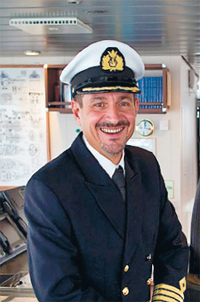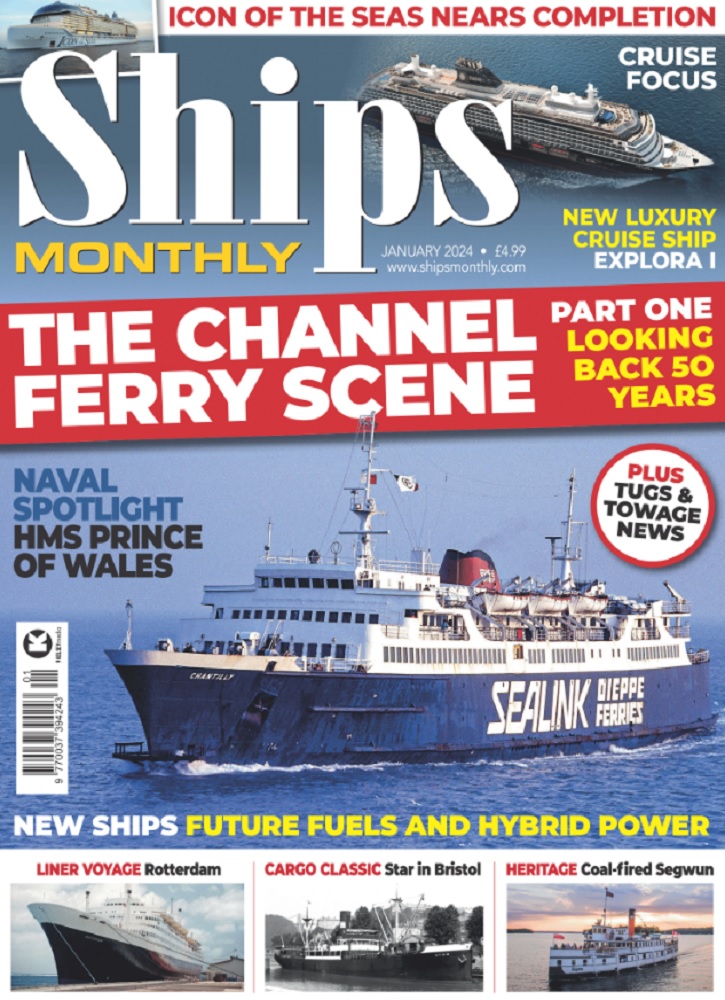Captain Fabio Tocco has recently taken command of the newly-delivered Dive Support Vessel Seven Havila. Gary Ritchie talks to him about his career and his new command.
What inspired you to undertake a career at sea?I was brought up in the small coastal village of Porto Ercole in Tuscany, Italy, where my father owned a ship chandler. This mostly dealt with yachts in the marina and I worked there during my school years, gaining experience in air diving whenrepair work was needed on theyacht moorings. I also had a more direct connection with the sea as one of my uncles was a Deck Officer. My initial thoughts of going to sea were probably due to my uncle’s influence.
Where did you complete your nautical training?I completed my initial training in a local nautical school from 1982 to 1989 and then served for a year as a Radar Operator in the Italian Navy (Marina Militare). I spent a further two years working on private yachts in the Mediterranean before I became a Deck Cadet in the Merchant Navy.
How did your first ventures into the Merchant Navy differ from your previous sea going experiences?My cadetship and my years as 3rd Officer on the passenger ships were completely different experiences from my previous work on yachts and in the Marina Militare. I served on some very large passenger ships, including Eugenio Costa, which was later Edinburgh Castle. During this period I served in the Caribbean, Mediterranean and most memorably in the Antarctic Peninsula and Weddell Sea. Probably my most unusual assignment as a Deck Officer was taking small groups of passengers onto the ice shelf.

When did you move from the passenger ship environment to the offshore industry?By 1997 I was looking for a new challenge and also a more regular balance between work and leave. As my uncle had worked in the offshore industry and was by this time a Captain, I was intrigued by this aspect of the Merchant Navy.
What vessel types did you serve on when you moved to the offshore industry?Initially I was on the Semi-Submersible crane vessel Saipem 7000 and the barge Castoro 6. I served as 2nd Officer and then Chief Officer, and also gained some pipe-lay experience when Saipem 7000 was converted to provide J-Lay capabilities. I stayed on these vessels until 2001, but I wanted to try Dive Support Vessels and joined Stolt Offshore as 1st Officer in order to gain some diving experience.
Was this a similar challenge to the one that confronted you when you switched from passenger vessels to the offshore industry?The ships I sailed on during my time with Stolt Offshore and later Acergy Shipping were Seaway Kestrel, Seaway Osprey and Acergy Discovery. These were very different to the previous vessels I had sailed on, and the role of the Deck Officer on a Dive Support Vessel differs quite markedly from other ship types. Each ship type has its challenges, and for Dive Support Vessels the challenge is to ensure the safety of all on board as well as those working on the seabed. It is a unique working environment and poses unique challenges.
When was your first command?My first command was the Dive Support Vessel Acergy Discovery in 2007. I had been sailing on the vessel as Chief Officer and was extremely lucky to have been assigned to a Captain who was willing to teach and guide younger Officers. I had not expected to take command of the ship as early as I did, but grasped the challenge when it was offered.
You have now moved on to a new state-of-the-art Dive Support Vessel. How does this differ from your previous ships?Seven Havila is a very different ship from Acergy Discovery. The technological advances in both the marine aspects of the ship and the diving systems mean there is a high degree of automation and computer control on Seven Havila. Far from removing the need for a fully trained and competent crew, this means, more than ever, that everyone must work as a team and be conversant with all the systems and equipment.
What challenges do you foresee on this new ship?As Master, my biggest challenge is always the safety of my crew and all persons who sail on board. Because of the nature of our work, the crew is made up of diverse groups of specialists, some of whom have less seagoing experience than their colleagues. I see my role as being one that brings these diverse groups together to ensure that we work as a team, remain safe and perform our duties to the best of our abilities.


